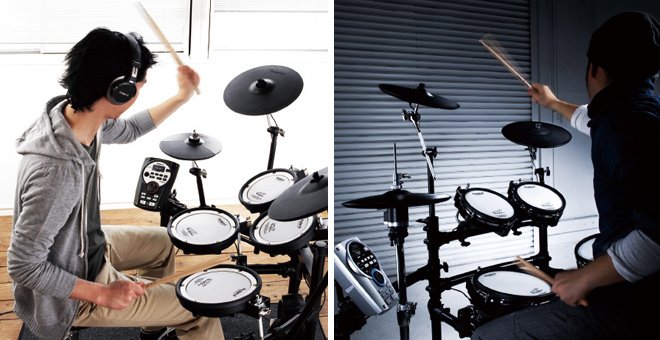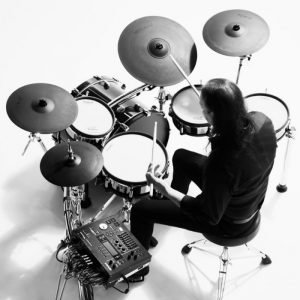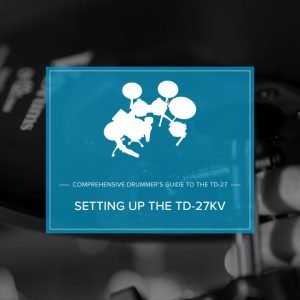Ask any top drummer how they got so good, and every single one will mention the P word – practice. Nobody is born with the divine ability to paradiddle: hours of blood, sweat and tears have been shed to get as precise, fast and musical as possible.
But practicing enough, and practicing correctly for your situation, is easier said than done.
Acoustic kits, as anybody living next door to a tub-thumper will tell you, can be a tad antisocial. They can throw up other problems when preparing for a live gig too:
Contributed by Roland UK Team
Being unable to hear fellow bandmates over the volume
Struggling to find space in a house, garage or flat for your kit
Difficulty playing along to recordings to learn songs
This is where an electronic drum kit comes into its own. Easily tucked into the corner of a room, the volume control and headphone socket stop you becoming public enemy number one. They also help you pick out the subtleties of the other instruments to become a tighter live act – no need to crank the guitar amps up to 11.
 Click practice makes perfect
Click practice makes perfect
When you’re on stage and the adrenaline is pumping, many amateur drummers naturally speed up. It’s vital to stay in the pocket and keep the band tight. Practicing along to songs with a built-in click function helps sharpen your timing so when it comes to playing live you have a natural sense of the song’s rhythm and tempo.
Playing to recorded beats per minute (BPM) allows you to hone your skills. With a built-in click you can hear as soon as a snare hit or drum fill doesn’t land exactly on the beat, so you can measure and monitor how precise you are becoming as a musician. Being able to switch between different time signatures and speeds will expand your playing ability.
Input your own audio
Poor monitor levels and noise from the audience can be distracting during a live performance so you need to know the songs inside out. Practicing on an electronic kit means you can input audio and mix sound levels between the recording and your drumming to really drill any parts you might struggle with. It’s the equivalent of bringing your band rehearsal home with you.
A built-in song player means with your kits means you can play along to prerecorded tracks and receive feedback if your timing falters. You can listen back by recording your performance in Quick Rec mode or using the A-B repeat function to nail those tricky song sections. And the variety of songs in coach mode helps you master all kinds of styles.
Perfect the sound
You can spend hours perfecting your drum sound in the practice room but when it comes to playing live on an acoustic kit it can be infuriating trying to recapture the same tone. A key advantage of electronic drums is the selection of onboard kits available. You can even programme your own personalised drum sounds and flick between kits via the module at the touch of a button.
Quick Edit functions via the module let you tinker with tuning, muffling and straining on each pad – just like an acoustic drum – but without having to physically tighten them. This gives you more sound modeling options and allows you to be more expressive both on and off stage.
Mesh heads make a difference
Some electronic drum pads – especially kick pads – feel clunky, and make a loud noise when played. The volume and poor rebound of rubber and silicone can also hinder and slow your play.
Mesh heads only play back the sound of the note: making them quieter than rubber drum pads. The realistic stick response means a more satisfying hit and dual-zone pads make rim shots possible, producing a different note when you hit the exterior rim. This, along with accurate head sensors and swinging cymbals with choke control, means you don’t lose any of the dynamic response when playing live.
Related Article
How To Make Your Drum Practice More Effective
A Drummer’s Guide to Quiet Practice










